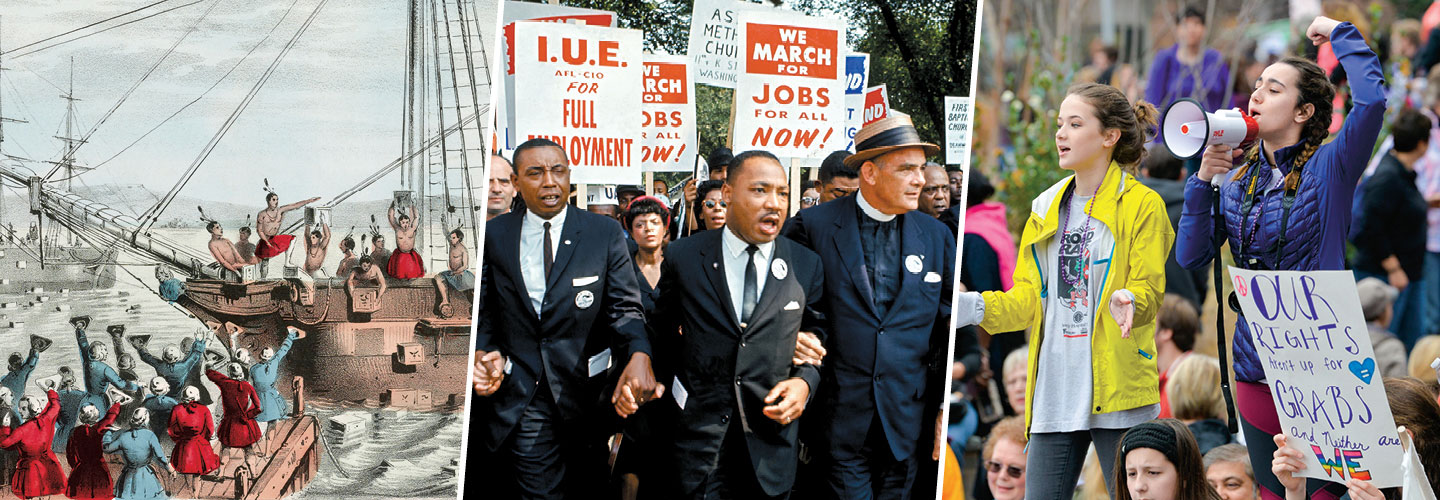It was a gray January Saturday in Washington, D.C., but nobody was resting. Just one day after Donald Trump had been inaugurated as president, the streets were jammed with people participating in the Women’s March.
Near the U.S. Capitol, they cheered speeches defending the rights of women and people of color—who they believed the incoming president had shown disrespect for during his campaign. Then, as if to make sure Trump heard them, many of them marched to the gates of the White House.
The crowd in Washington was estimated to have been at least half a million people. Including the participants of more than 600 other “sister marches” around the country, the Women’s March was likely the largest single-day demonstration ever held in the United States.
The gathering was part of “a long and proud history” of protest in the U.S., says David Meyer of the University of California, Irvine. It all goes back, he says, to the first major American protest, the Boston Tea Party.
In December 1773, groups of American colonists boarded three British ships and dumped 342 chests of tea into Boston Harbor. That act of defiance was part of a struggle over taxation and control by Great Britain. It also set the stage for a larger conflict: the fight for independence from Britain in the American Revolution (1775-1783).
“Protests seize [the country’s] attention and force figures like presidents to respond to them,” Meyer says. The tradition is protected in the First Amendment to the U.S. Constitution as “the right of the people peaceably to assemble, and to petition the Government.” For the nation’s Founders, who had led the country from resistance to independence, Meyer says, this was a sign of how much they valued dissent.
Indeed, says Meyer, “America was born from protest.”
It was a gray January Saturday in Washington, D.C. But nobody was resting. Donald Trump had been inaugurated as president the day before. And the streets were jammed with people participating in the Women’s March.
The participants cheered speeches defending the rights of women and people of color. They believed the incoming president had shown disrespect toward these groups during his campaign. Many of them marched to the gates of the White House. It was as if they were trying to make sure Trump heard them.
The crowd in Washington was estimated to have been at least half a million people. Thousands of others took part in more than 600 other “sister marches” around the country. In all, the Women’s March was likely the largest single-day demonstration ever held in the United States.
The gathering was part of “a long and proud history” of protest in the U.S., says David Meyer. He is a professor at the University of California, Irvine. It all goes back to the first major American protest, the Boston Tea Party.
In December 1773, groups of American colonists boarded three British ships. They dumped 342 chests of tea into Boston Harbor. That act of defiance was part of a struggle over taxation and control by Great Britain. It also set the stage for the fight for independence from Britain in the American Revolution (1775-1783).
“Protests seize [the country’s] attention and force figures like presidents to respond to them,” Meyer says. The tradition is protected in the First Amendment to the U.S. Constitution as “the right of the people peaceably to assemble, and to petition the Government.” For the nation’s Founders, this was a sign of how much they valued dissent.
Indeed, says Meyer, “America was born from protest.”

